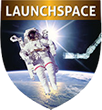Course Details
Course Summary
This course offers a detailed look at space launch system performance and trajectory design. All launch vehicle types are included: current expendable launch systems and conceptual expendable and reusable launch systems. Conceptual launch system configurations include horizontal and vertical takeoff, air-launch, two-stage-to-orbit, trans-atmospheric launch-to-orbit, and single-stage-to-orbit, with rocket and air-breathing propulsion. Launch system performance is derived from physical principles resulting in the guiding equations for ascent trajectories, including staging and performance losses due to gravity, drag, and steering. Trajectory constraints- dynamic pressure, vehicle attitude limits, axial and normal accelerations, etc., – and mission constraints – orbit requirements, launch site variation, launch azimuth limits, stage impact location, range safety, etc. – are examined and their effects on performance are illustrated. Numerous examples are used to illustrate important issues. Trajectory design and optimization using several applicable software packages – GVSIM, SORT, POST, OTIS, etc. – are examined in detail. Simulation models of several current and conceptual launch systems are reviewed and executed. Simulation models of notional launch systems will be developed in real-time by the attendees, led by the instructor.
Course Materials
Each attendee receives a soft or hard copy of the presentation materials.
Who Should Attend
Space-launch mission designers and operations managers. Launch vehicle engineers, analysts and users. Aerospace industry and government consultants. Launch operations managers, payload systems engineers and integrators.
What You Will Learn
Key physical principles behind launch system performance. Ascent trajectory equations and guiding parameters. First-order qualitative and quantitative merits of various launch system concepts. Fundamental performance trade-offs for users and designers.
Course Outline
- Review of Launch System Concepts
Current expendable launch systems and conceptual expendable and reusable launch system configurations, including horizontal and vertical takeoff, air-launch, two-stage-to-orbit, trans-atmospheric launch-to-orbit, and single-stage-to-orbit, with rocket and air-breathing propulsion. First-order qualitative and quantitative relative merits of various launch system concepts. - Fundamentals of Launch System Performance.
Basic definitions. Coordinate definitions and geometry. Physics, the rocket equation and other guiding equations of ascent trajectories. Staging and performance losses due to gravity, drag, and steering, etc. Mission and trajectory constraints- orbit requirements, launch site variation, launch azimuth limits, stage impact location, range safety, dynamic pressure, vehicle attitude limits, axial and normal accelerations, etc. - Software: Introduction to GVSIM and SORT.
Review of development history and philosophy behind GVSIM and SORT. Walk-thru of simulation model examples. Running of example simulation models and review of results. Select and review several launch system concepts for new GVSIM and SORT model development and check-out. Execution of simulation models to perform vehicle sizing and closure. Generation of design space response models. - Software: Introduction to POST and OTIS.
Review of development history and philosophy behind POST and OTIS. Walk-thru of simulation model examples. Running of simulation model examples and review of results.
Instructor

Leon McKinney has over 30 years of experience in system concept synthesis, design, performance assessment, optimization and mission analyses. He has participated on a wide range of programs for the Department of Defense, the National Reconnaissance Organization, the Ballistic Missile Organization, the Strategic Defense Initiative and NASA, including Space Shuttle, Shuttle Launch Dispenser, Peacekeeper, SICBM, Trident, AMaRV, X-43 and X-51. Mr. McKinney has participated on many advanced vehicle development programs including AMLS, TAV, Copper Canyon, NASP, STAS, ALS, NLS, DSV, Smart MaRV, MSTART, ABLV, SLI, RMLS, NGLT, CAV, FALCON, and HIFIRE. He has been involved in a number of other national security projects, including support of National Intelligence Estimate activities. Mr. McKinney currently provides system analysis support to many government agencies and contractors on various aerospace and defense programs and also provides technical and policy support to Congress. He is an AIAA Associate Fellow and serves on AIAA’s Technical Activities, Public Policy, Space Transportation, and Hypersonic Technologies & Systems Programs Committees. Mr. McKinney holds BS and MS degrees in Aerospace Engineering from Purdue University
